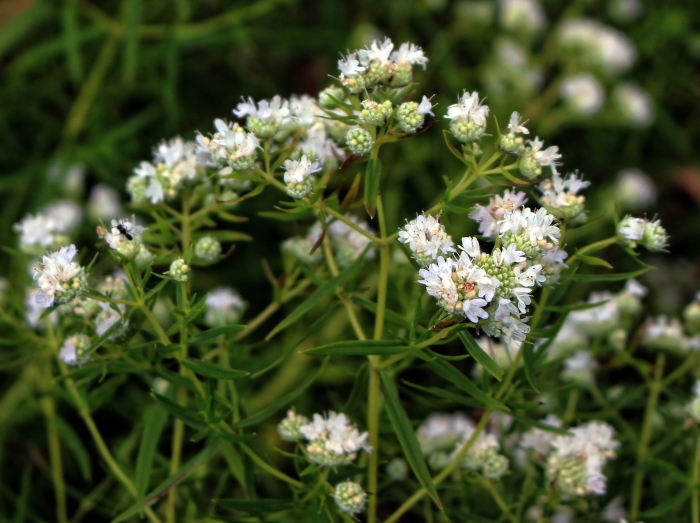Virginia Mountain Mint
(Pycnanthemum virginianum)
Virginia Mountain Mint (Pycnanthemum virginianum)
/
/

aarongunnar
CC BY 4.0



















































Estimated Native Range
Summary
Virginia Mountain Mint is valued for its aromatic foliage, which releases a strong mint fragrance when crushed or disturbed, and its ability to attract beneficial insects. It is often used in native plant gardens, borders, and as a naturalizing element in informal settings. This mint prefers full sun but can tolerate part shade and is adaptable to a range of soil types, provided they have good drainage. While it is not aggressive, it can spread by rhizomes and self-seeding, so some maintenance may be required to keep it in bounds. It is generally pest and disease-free, making it an easy plant to grow for both novice and experienced gardeners.CC BY-SA 4.0
Plant Description
- Plant Type: Herb
- Height: 2-3 feet
- Width: 1-1.5 feet
- Growth Rate: Moderate
- Flower Color: White
- Flowering Season: Summer
- Leaf Retention: Deciduous
Growth Requirements
- Sun: Full Sun, Part Shade
- Water: Medium
- Drainage: Slow, Medium, Fast
Common Uses
Bee Garden, Bird Garden, Butterfly Garden, Deer Resistant, Edible*Disclaimer: Easyscape's listed plant edibility is for informational use. Always verify the safety and proper identification of any plant before consumption., Erosion Control, Fragrant, Groundcover, Low Maintenance, Street Planting, Water Garden
Natural Habitat
native to moist meadows, stream banks, and open woodlands of the eastern and central United States and eastern Canada
Other Names
Common Names: Common Mountain-Mint, Virginia Mountain Mint, Wild Basil, Prarie Hyssop, Virginia Thyme
Scientific Names: , Pycnanthemum virginianum, Pycnanthemum lanceolatum, Koellia virginiana, Pycnanthemum virginianum f. citriodora, Satureja virginiana, Thymus virginicus, Brachystemum lanceolatum, Brachystemum virginicum, Koellia lanceolata
GBIF Accepted Name: Pycnanthemum virginianum (L.) T.Durand & B.D.Jacks. ex B.L.Rob. & Fernald